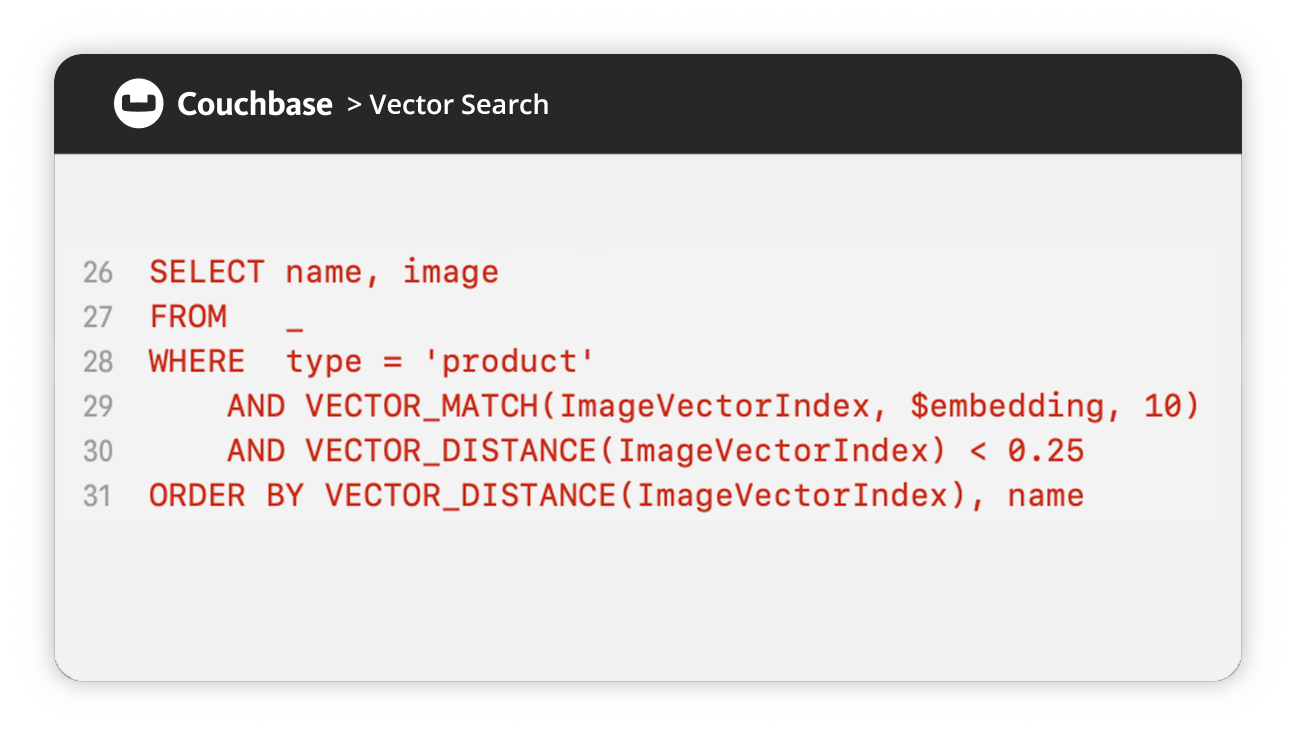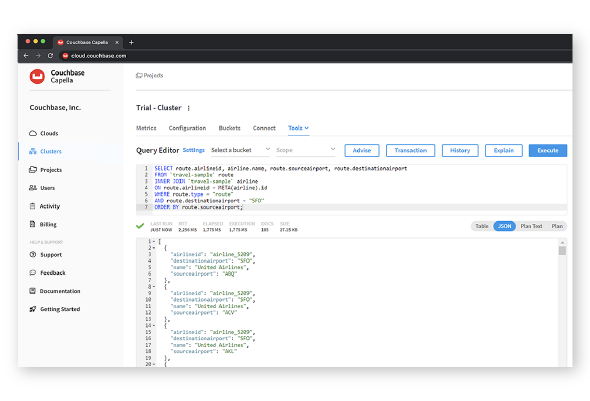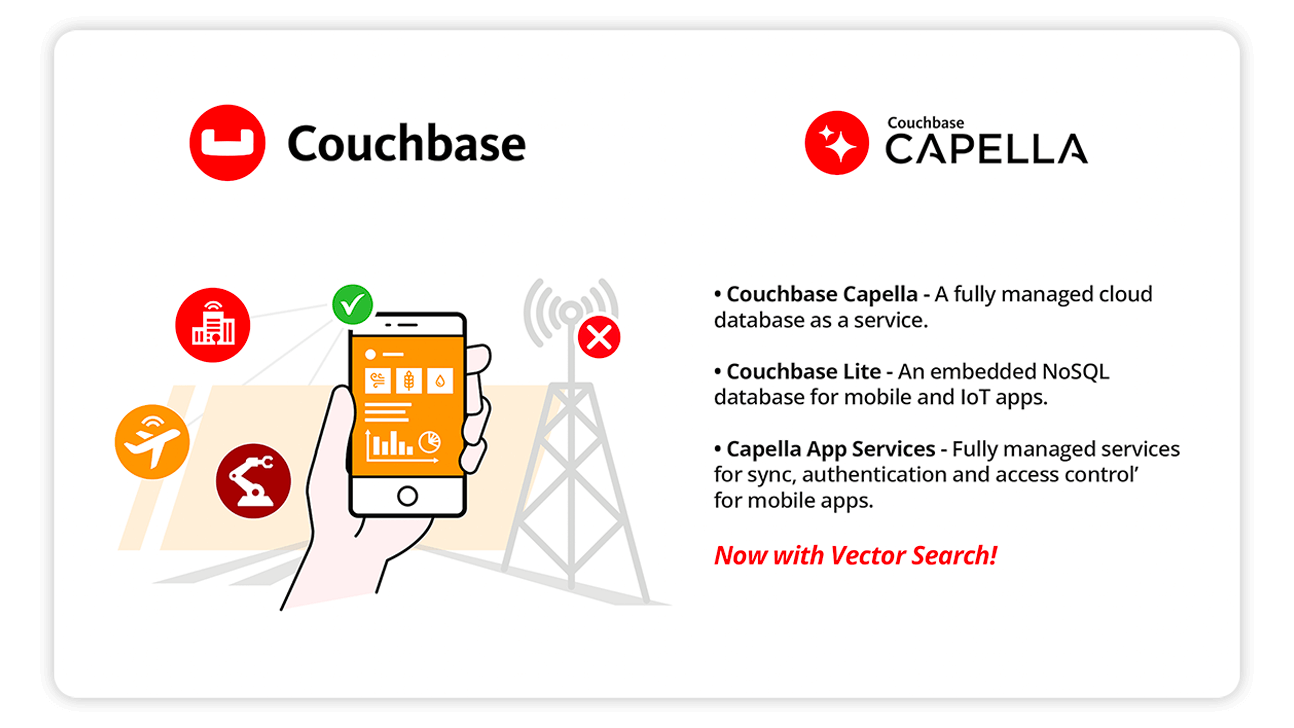This page covers:
Why is data management important?
In a modern organization, data underpins every critical aspect of business, from decision making to operations to the customer experience. To maximize its value, all business data must be organized, integrated, and accessible. It has to be up to date, consistent, and accurate to be meaningful. And it must be secure to meet regulatory requirements and maintain the trust of customers. Data management is the practice that ensures your organization’s data meets all these requirements at all times.
Effective data management enables:
Informed decision-making
Businesses generate and accumulate vast amounts of data. Effective data management ensures that this data is organized, accurate, and accessible so its users can quickly and confidently make critical decisions at any time, knowing they have reliable information.
Business intelligence (BI) and analytics
Decision makers often rely on BI and analytics tools, but these tools are only as good as the data they analyze. The data management process ensures that tools are working with complete and accurate data in the required formats. Executives and business users at every level of an organization can then use the tools to gain insights into market trends, customer behaviors, and internal operations to drive daily decisions and long-term strategies.
Operational efficiency
Proper data management streamlines business processes, improves operational efficiency, and increases employee productivity. Well-managed data allows quicker and more accurate retrieval of information, reducing the time and effort required for business users and business applications to perform their tasks.
Regulatory compliance
Many industries are subject to strict regulatory requirements regarding data handling and privacy. Effective data management ensures that organizations comply with all data protection laws and industry standards, which can be extensive and complicated. Adhering to data regulations reduces the risk of penalties and legal issues and builds customer trust.
Competitive advantage
A well-managed and analytically rich dataset is a significant advantage in a competitive business environment. Businesses that can effectively harness data to enhance innovation, efficiency, and customer satisfaction are likelier to outperform their competitors.
Types of data management
Data management encompasses a wide variety of activities related to acquiring, storing, processing, and ensuring the quality and security of data. Different types of data management focus on different areas of the data lifecycle. Key types of data management include:
Database management
A relational database management system (RDBMS) manages structured data in tables that connect related data elements. A NoSQL database management system is ideal for handling unstructured and semi-structured data with high flexibility and scalability.
Master data management (MDM)
MDM is the discipline of organizing, categorizing, and harmonizing critical business data, such as customer or product information, to create a single authoritative source that ensures consistency and accuracy across an organization’s various systems and processes.
Document management
Involves organizing, storing, and tracking electronic documents, often in a document management system (DMS).
Metadata management
Refers to the creation, storage, and management of metadata (data that describes and provides information about other data). Metadata helps users understand and use data effectively.
Data quality management
Ensures the accuracy, completeness, and consistency of data. It involves processes like data profiling, cleansing, and validation.
Data governance
Establishes policies and procedures to manage data assets and ensure data quality, security, and compliance.
Data security management
Focuses on protecting data from unauthorized access. It ensures confidentiality, integrity, and availability.
Data integration
Combines data from different sources to provide a unified view. Integration is often accomplished through ETL (extract, transform, load) processes.
Data warehousing
Centralizes and organizes large volumes of data from various sources to support business intelligence and reporting.
Big data management
Deals with the storage, processing, and analysis of massive volumes of structured and unstructured data, often in distributed computing environments.
Data lifecycle management
Manages data from creation to deletion, addressing aspects such as storage, archiving, and disposal.
Businesses usually combine and interconnect different data management solutions to support an overarching data management strategy. Your organization’s specific needs and goals should determine the data management solutions you adopt.
Data management benefits
As explained above, data management is critical to modern data-driven businesses to support informed decision-making, BI and analytics, operational efficiency, regulatory compliance, and competitive advantage. While those are reason enough to ensure your organization has a well-planned and executed data management strategy, there are also numerous other benefits. Chief among them are:
Risk management – Businesses face myriad data-related risks, including data breaches, system failures, and other security threats. Proper data management includes all data security, backup, and recovery measures necessary to reduce the risk of data loss and ensure business continuity.
Strategic planning – Data is a valuable resource for strategic planning and forecasting. Organizations can use historical data to identify trends, predict future market conditions, and plan for long-term success.
Cost savings – Efficient data management can reduce many data-related costs. Businesses can reduce operational costs associated with infrastructure, processing, and management by eliminating redundant data, optimizing storage, and automating processes.
Customer satisfaction – Understanding customer needs and preferences is essential for providing compelling products and services that build loyalty. Data management helps businesses gather, analyze, and use customer data to enhance customer experiences, tailor offerings, and create stronger relationships.
Data monetization – Organizations with high-quality data may have opportunities to monetize it by offering data-driven products, services, or insights to external parties.
Data management challenges
Data management is a significant challenge simply due to the sheer volume and diversity of data generated by modern businesses. The difficulty is compounded by the complexity of integrating data from various sources. And the constant evolution of business requirements and technologies makes it even harder to maintain a successful data management practice without interruption. The biggest challenges are:
Data quality – Because data originates from diverse sources, it’s highly prone to inconsistencies, inaccuracies, and incompleteness. To correct these issues, organizations must implement data quality management processes, conduct regular audits, and invest in automated data cleansing and validation tools. In addition to establishing clear data quality standards, businesses should appoint official data stewards responsible for ongoing monitoring to maintain high-quality data.
Data integration – The wide variety of data sources and formats flowing into a business creates complexity in reconciling and harmonizing disparate datasets. To address this, organizations should develop a robust data integration strategy, employ compatible technologies, and establish standardized data formats. A multi-model database like Couchbase is specifically designed to support multiple data models in order to increase versatility while minimizing complexity, management, data sprawl, and costs.
Data security – Data security is always a challenge because cyber threats constantly evolve and become more sophisticated. To stay a step ahead, organizations must implement robust encryption, access controls, and authentication measures. It’s also essential to run regular security audits, train employees on security best practices, and stay updated on the latest security threats.
Data governance – Data governance is focused on establishing the policies and procedures around data that the rest of your data management practice will enable and enforce. Data governance issues generally arise from insufficient or unclear policies and procedures, so your organization must implement a comprehensive data governance framework that defines roles, responsibilities, and processes. The framework should include data governance tools, regular training sessions, and foster a culture of accountability.
Data insight – Deriving meaningful insights from data requires complex analysis and interpretation, as well as tools and skills to extract actionable information. Companies must be willing to invest in advanced analytics tools and provide training to enhance data literacy and data visualization techniques across the organization. Fostering a data-driven culture that encourages collaboration between business and data teams contributes to more effective data insights.
Developing a data management strategy
Developing a successful data management strategy requires a comprehensive approach that addresses all aspects of acquiring, storing, processing, and ensuring the quality and security of your organization’s data. Here’s a high-level overview of key steps to implement an effective plan:
1. Define business objectives and requirements – Clearly understand your business objectives and identify the data requirements that support those goals.
2. Assess your current state of data management – Conduct a thorough assessment of your current data management practices, infrastructure, and capabilities.
3. Establish a data governance framework – Define a robust framework that outlines policies, procedures, roles, and responsibilities for managing and using data.
4. Create a data inventory – Develop a comprehensive inventory of all data assets within your organization. Categorize and classify them based on sensitivity, criticality, and usage.
5. Ensure data quality – Implement standards, processes, and tools to ensure data quality. Include data profiling, cleansing, and validation, and plan to audit and monitor data quality metrics regularly.
6. Enhance data security measures – Implement robust data security measures to protect sensitive information. Include encryption, access controls, authentication mechanisms, and regular security audits.
7. Implement data integration and architecture – Design an efficient data architecture that supports scalability, flexibility, and interoperability.
8. Foster a data-driven culture – Promote a culture that prioritizes data for decision making. Provide training and resources to enhance data literacy and encourage collaboration between business and IT teams.
9. Invest in technology and tools – Identify and implement scalable technology solutions and tools that align with your data management objectives and business goals.
10. Establish data lifecycle management – Define processes for data lifecycle management, including data creation, usage, archiving, and disposal.
11. Monitor and measure performance – Establish key performance indicators (KPIs) to measure the effectiveness of your data management strategy. Address any performance issues promptly.
12. Continuously improve – Regularly review and update your strategy based on evolving business needs, technological advancements, and changes in regulatory requirements.
A data management platform (DMP) is a centralized technology solution that allows organizations to collect, store, manage, and analyze large sets of data from various sources. While a DMP can be used across industries for numerous purposes, DMP typically refers to platforms used by marketing and advertising teams to gather and organize audience data to optimize targeting and personalization. Key features of DMPs include:
Data collection – DMPs aggregate data from online and offline channels to create a comprehensive view of consumer behavior and preferences.
Data segmentation – DMPs categorize data into segments based on specific criteria to support targeted marketing and advertising campaigns.
Audience profiling – DMPs create detailed profiles of audiences, helping marketers understand the characteristics and behaviors of different user segments.
Integration with marketing tools – DMPs typically integrate with other marketing technologies, such as customer relationship management (CRM) systems, advertising platforms, and analytics tools.
Real-time data processing – Many DMPs offer real-time capabilities so marketers can make immediate and highly personalized decisions based on up-to-date information.
Privacy and compliance – DMPs often include features to manage user consent, ensuring compliance with data protection regulations and privacy standards.
Popular DMPs include Adobe Audience Manager, Oracle BlueKai, and Lotame.
Conclusion
Data is the lifeblood of a modern business, and data management includes all the processes and procedures that keep it clean, healthy, safe, and flowing smoothly to all the parts of the organization that need it. While data management has a huge impact on the success of a business, it also presents many challenges due to the vast volume and variety of data that needs to be properly maintained and because of the unpredictability and constant changes of business requirements and technologies.
To learn more about data management and related technologies, check out these resources:
Different types of data platforms
Different types of databases
A guide to backend databases
Additional database concepts
Database versus data warehouse
Simplifying data governance with Couchbase Mobile
Couchbase’s multi-model NoSQL DBaaS
Explore more about data management


